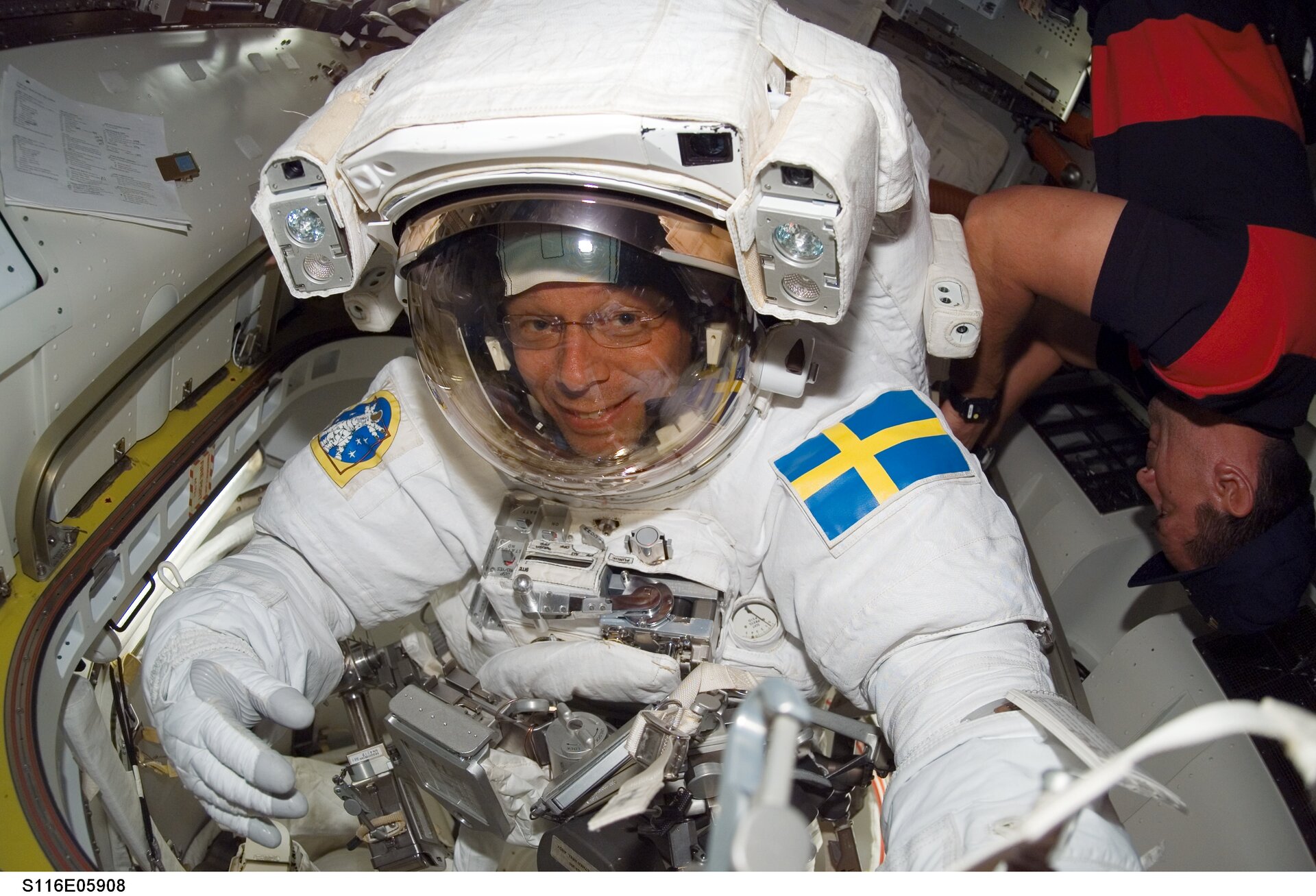Space on Earth
Floating in microgravity is not a new experience for Christer Fuglesang and the crew of the Discovery. They have trained for years for this mission using highly sophisticated simulators and parabolic flights, but do they really prepare astronauts for the real thing?
Each spaceflight is the culmination of a long period of training and if everything goes well, there are no surprises. There is one big difference, however, between a spaceflight and a simulation: during a spaceflight there is a real vacuum on the other side of the spacecraft’s windows, a real Earth is moving below, microgravity is a constant and most of all, you cannot ‘reset’ if a problem arises.
The most unique part of a spaceflight is living and working in microgravity and something that appeals to all budding astronauts. Although the Earth’s gravity reaches up to space, an orbiting satellite avoids being pulled back to Earth by flying so fast that it constantly bends around the curve of the Earth. Centrifugal force cancels out gravitational force and the spacecraft remains in continuous free-fall. The result is weightlessness, also called microgravity.
To simulate microgravity here on Earth, special airless shafts called drop towers can be used to create a few seconds of weightlessness during free-fall. This is useful for testing technology and carrying out scientific experiments but obviously not suitable for humans because of the violent impact on landing. Sounding rockets are also used for testing scientific experiments allowing the period of weightlessness to be extended to over 10 minutes.
Take a plane!
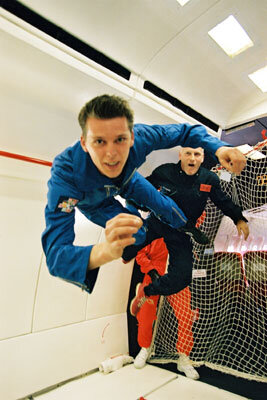
The only way humans can experience microgravity without a real spaceflight is by taking part in a parabolic flight. The aircraft flies in an arc similar to that made by a ball thrown into the air. Its momentum carries the plane to the apex of the parabolic arc then the nose of the plane traces the parabola round and it free-falls downward. Passengers experience microgravity for about 20 seconds at a time, by flying many parabolas the total time can be extended but each period of weightlessness is always less than half a minute.
"My first experience of weightlessness was on a parabolic flight and I was euphoric, it felt really nice", remembers Christer Fuglesang. "Many people feel sick when they fly for the first time because it’s like being on a rollercoaster but I enjoyed the feeling of freedom from the very first moment."
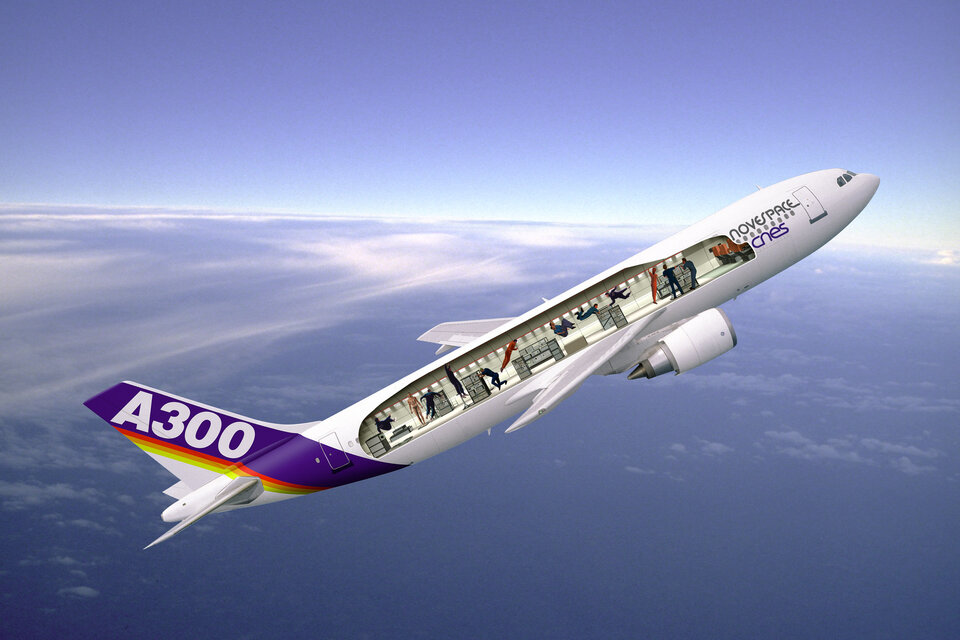
ESA uses an Airbus A300 for parabolic flights. These are usually for scientific research and technology development purposes but they are also used to train astronauts. NASA has a four-engine KC-135, a military version of the Boeing 707 jetliner, that it uses for parabolic flights and the Russians use an Ilyushin IL-76 MDK to train their cosmonauts.
Microgravity experienced during parabolic flights is very similar to the weightlessness experienced in space. Although it only lasts for seconds, even though repeated some 30 times, it is still sufficient to become used to moving around and wearing a spacesuit. The most important lessons are learning how to control your movements - in space just a little push with one finger is enough to send you to the other side of the Space Station – and learning how to recognise which way is up and which way is down.
Space sickness is caused by the conflict between the mixed messages sent to the brain by the eyes and the balancing organs inside the ears. Although experience gained during parabolic flights helps astronauts to adapt to space sickness, some still suffer during the first few days; luckily, pills can ease the feeling of sickness.
Large and deep pool
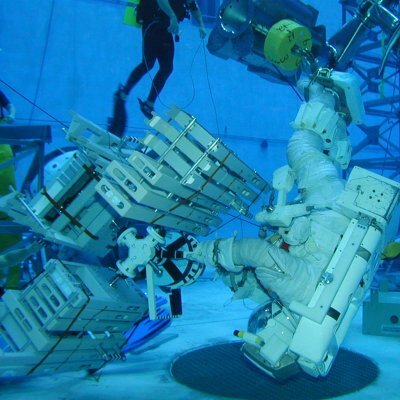
Divers will have some idea of what it is like to walk in space. Despite the resistance created by the water, which makes it slightly different from space, working under water is still the best way to simulate working in space. To increase the sensation of microgravity, the astronaut’s weight, when diving, is balanced with ballast to create neutral buoyancy.
All astronaut training centres have a pool equipped with submerged life-size replicas of spacecraft modules. Inside the pools, astronauts dressed in their spacesuits and assisted by divers practise the tasks they will have to carry out in space again and again.
Christer Fuglesang spent countless hours in the NASA pool preparing for his mission. "The biggest limitation created by the spacesuit is moving your arms as you always have to think about the shoulder and elbow joints", explains Fuglesang, "as you simply can't move your hands the same way you can in normal clothes. The other thing is the internal air pressure that makes the suit like a balloon. You have to use real force to move your arm and then fight against the pressure trying to straighten your arm.”
The pools are also used for evacuation training and to plan spacewalks. With the help of experienced astronauts and deep-sea divers, mission planners figure out the best way to carry out tasks in space. They also come in useful for developing and testing space hardware in neutral buoyancy.
Virtual reality
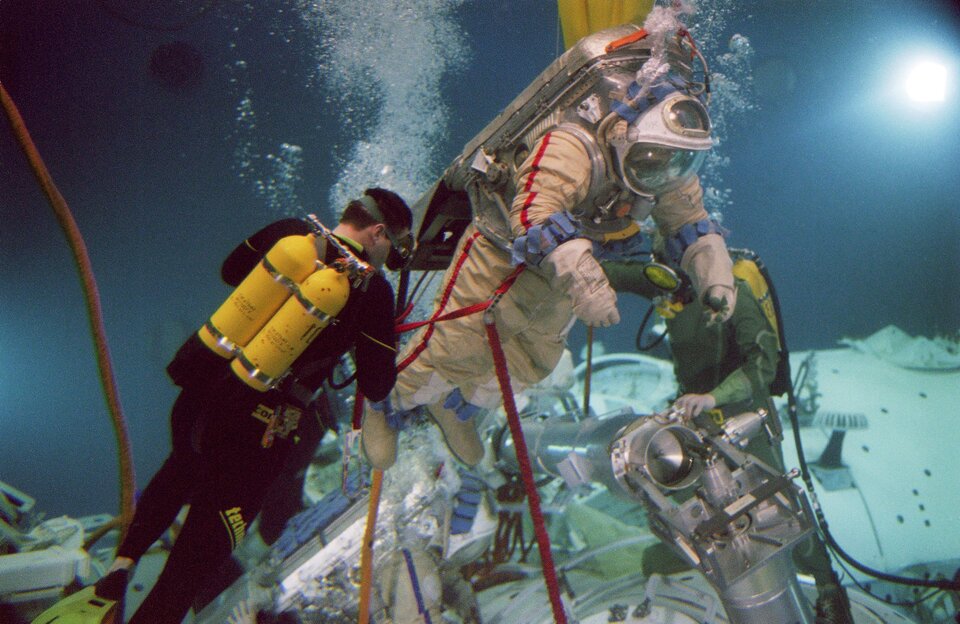
Astronauts learn to fly the Space Shuttle and Soyuz using simulators. Those used for the Shuttle missions are extremely authentic and provide training for all Shuttle operations including pre-launch, ascent, orbit operations (e.g. docking), entry and landing. Orbit training includes payload operation, payload deployment and retrieval, manoeuvres and rendezvous.
Motion base simulators are used to train pilots and commanders in the mission phases of launch, descent and landing. Motion cues are provided by the 6-degrees-of-freedom motion system, which also allows the flight deck to be rotated 90 degrees to simulate lift-off and ascent.
Another important simulator is called a fixed base; this is used for specific mission/payload training as well as launch descent and landing. It is the only trainer with complete fore and aft consoles, including an RMS console (Remote Manipulator System - as Shuttle robot-arm is officially called) with a digital-image generation system providing visual cues for out-the-window scenes for the entire mission, including the Earth, stars, payloads and the landing runway. If need be missions can be simulated literally from launch to landing and run for the whole length of the mission, complete with food packed in containers and working toilets.
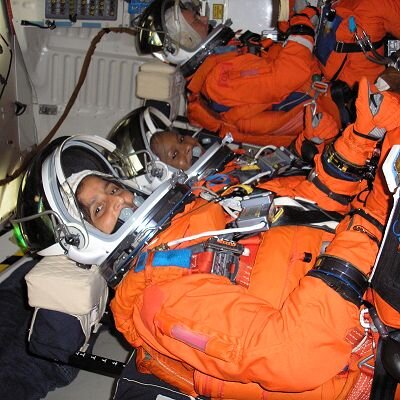
Astronauts also train with the flight controllers in the Mission Control Centre (MCC). The simulators are linked to the MCC by computer in the same way the Shuttle and the MCC are linked during an actual mission. In this way, astronauts and flight controllers learn to work as a team, solving problems and working nominal and contingency mission timelines.
Special simulators are also used for docking and Shuttle robot-arm operations. To practise the latter, a version of the robotic arm able to work in the Earth’s gravity is used to move helium-filled, life-size objects to and from a plywood replica of the Shuttle payload bay.
Thanks to the rapid development of computers and virtual reality interfaces it is now possible to simulate all aspects of life and work in space; even spacewalks can be simulated by using virtual reality helmets and gloves. In total, once assigned to a flight astronauts spend around 300 hours training in the various simulators.
For the pilot training also includes practising the last stage of the mission, landing back on Earth on board the Shuttle. The Shuttle approach is at a very steep angle and at high speed, and is radically different from landing in a commercial aircraft. Shuttle pilots spend about 100 hours flying the trainer aircraft, equivalent to 600 Shuttle approaches.
All the hours spent training in pools and simulators prepare astronauts for their specific mission and ensure that they carry out they tasks in a smooth manner preserving the equipment and more importantly ensuring their crew mates’ and their own safety.
No substitute for reality
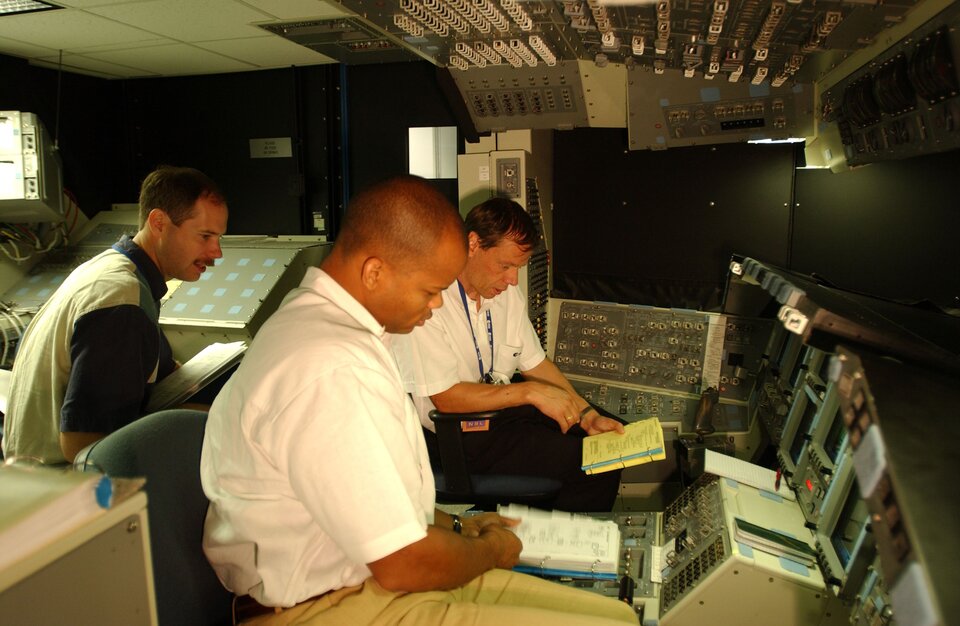
Despite the long training and preparation, maybe nothing can really prepare astronauts for the thrill of lift-off and their first view of our world from space.
As Christer Fuglesang said, "After all that training there are couple of events that I'm really looking forward to. First is when the Solid Rocket Boosters turn on, because then you know you're going. Then you really go upwards. Next is about eight and half minutes later, when the engines turn off and you get the first feel of real weightlessness. And then the spacewalks: the first time when you go out from the vehicle and you don't see a pool around you, but instead there is black space and space station. It might be scary at first, but it is a very very interesting moment."
Now that Fuglesang has experienced all of these moments for real, his training for a possible next flight will be much easier - the simulation feels much more life-like when you know the reality behind the illusion.


